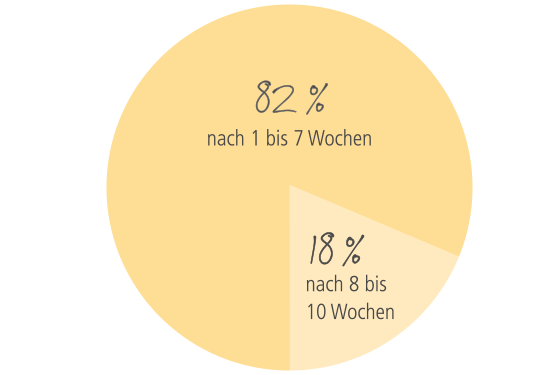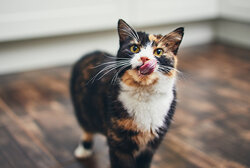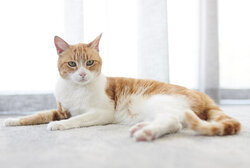The cat has a food allergy – what exactly does this mean?
A food allergy is a reaction to food in which the immune system does not function normally. The body reacts to the protein that triggers the allergy as if it were a pathogen. Unfortunately, this reaction is far too intense. Food intolerance, on the other hand, occurs when the cat reacts to certain substances in the food without the immune system being involved.
What are the symptoms of a food allergy?
The most common signs of a food allergy are changes in the skin, itching, vomiting and diarrhoea. These can appear suddenly, even with foods that the cat has been eating for a long time without any problem.
Possible symptoms are:
- Itching, especially on the face, ears and neck.
- The dog licking its sides and flanks
- Hair loss (due to licking)
- Dry, flaky skin
- Small spots the size of a grain of millet with crusts (miliary dermatitis) on the back
- Flatulence
- Diarrhoea
What causes a food allergy and how is it diagnosed?
A food allergy can be triggered by any animal or vegetable protein, and can occur practically overnight. It can even be triggered by food that the cat has eaten all its life and up to this point has never had a problem with.
A food allergy cannot be diagnosed with the help of a blood or allergy test! A reliable diagnosis can only be made by means of an exclusion diet (elimination diet). For this purpose, a single animal protein and, if necessary, a vegetable protein are selected. Types of meat that have never previously been fed to the cat are best suited for this. The cat should strictly follow this elimination diet for at least 2-3 months until the symptoms have disappeared (see illustration below).
Leftover food, treats (for example crunchy dry snacks), meat sticks, vitamin tablets and meat-flavoured medicines are completely taboo. Any medication should always be discontinued after consulting the vet.
Disappearance of symptoms following the right exclusion diet:

You may also like this

Nutrition for older cats
Nutrition tips for cats from the age of seven

Signs of illness in cats
A regular check-up helps to detect any illnesses

Dental problems in cats
Tartar should be removed by a vet

Diarrhoea in cats
Immediate measures and dietary changes in cases of diarrhoea
